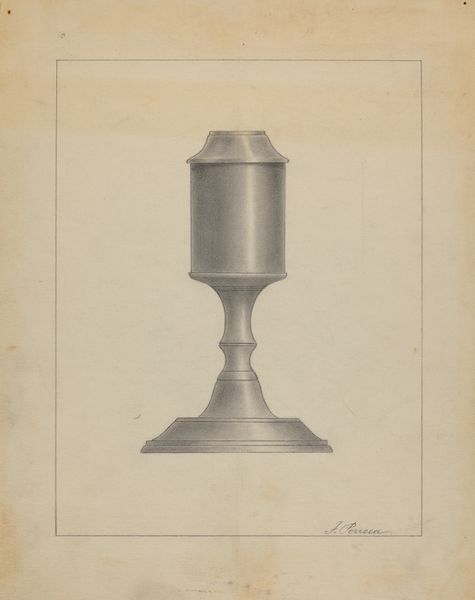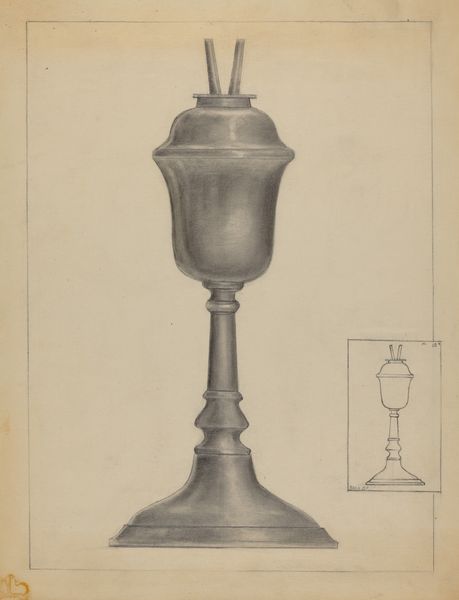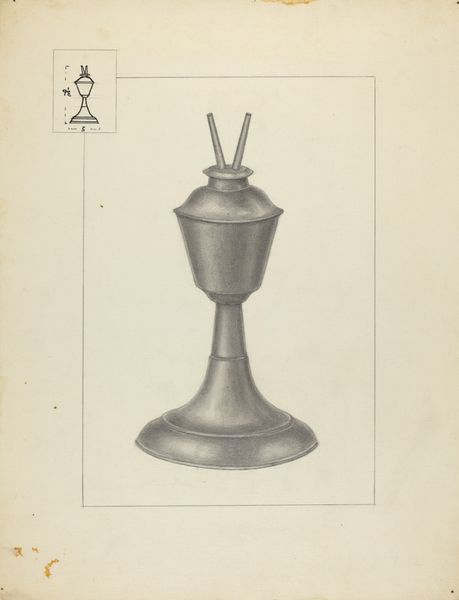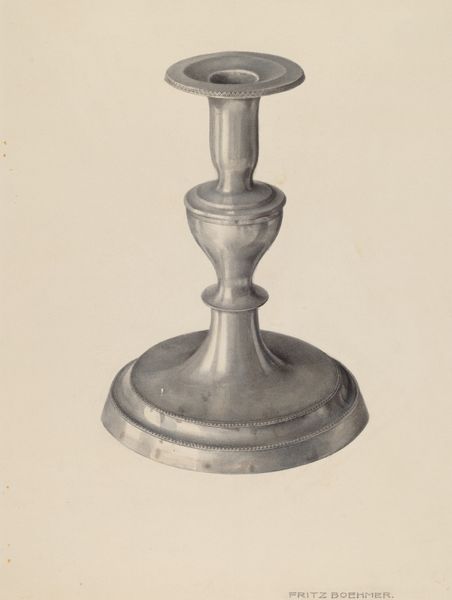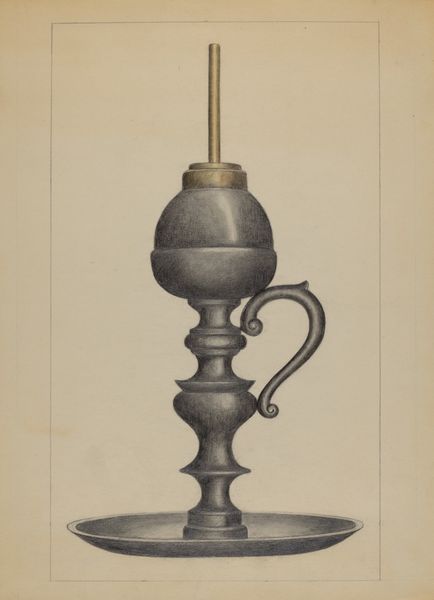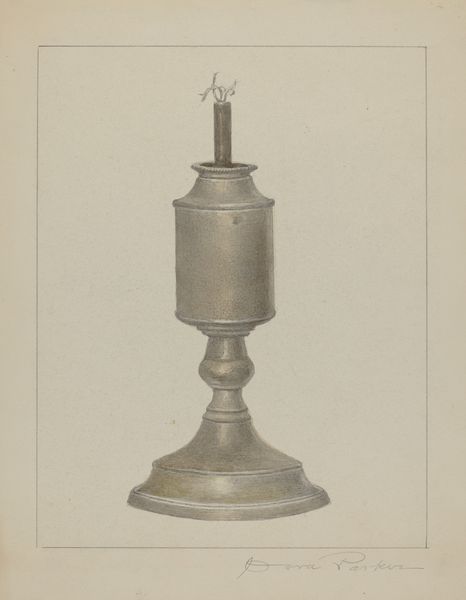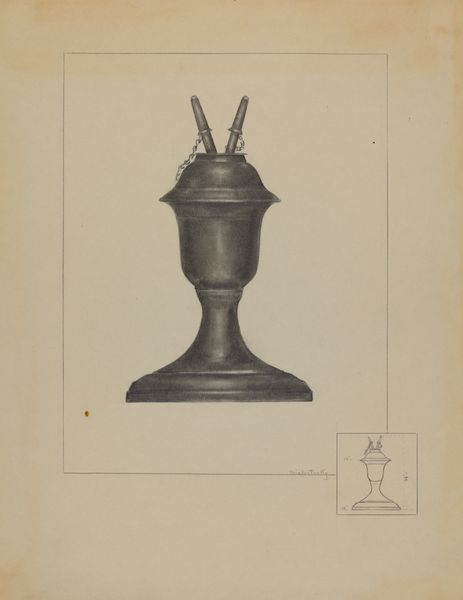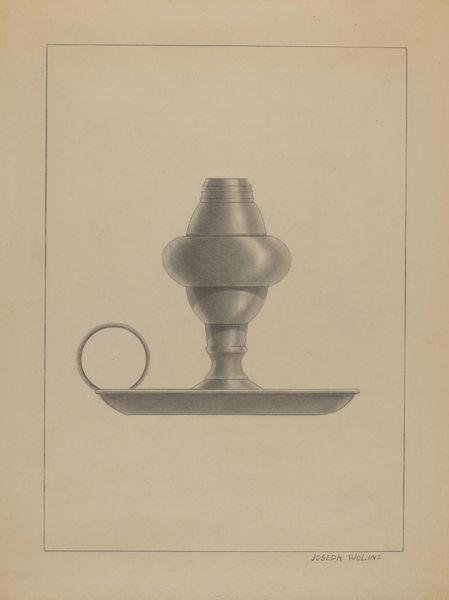
drawing, pencil
drawing
pencil drawing
pencil
academic-art
realism
Dimensions: overall: 30 x 22.9 cm (11 13/16 x 9 in.)
Copyright: National Gallery of Art: CC0 1.0
Curator: This pencil drawing is called "Camphene Lamp," made around 1936 by Miss E. Dorsey Bruen. It offers such a clean, almost architectural quality in its lines, doesn't it? Editor: Absolutely, the immediate impression is one of precise stillness, a quiet object captured with such dedicated skill. The symmetry and shadow play give it an almost haunting presence. What might this lamp have illuminated, symbolically? Curator: Camphene lamps like this were an important advance in portable lighting. They burned camphene oil, a mixture of turpentine and alcohol. Understanding its availability reveals how homes were lit, influencing work patterns, domestic life, and consumption habits. Editor: So, its dual spouts hint at balance, a duality perhaps: the practical flame versus the more metaphysical light of knowledge, or truth dispelling ignorance? There's something profoundly symbolic about artificial light challenging the darkness. Curator: Interesting that you jump to symbolism so readily! I tend to think of the drawing itself as the significant object. The artist chose to painstakingly render this everyday item, elevating it from simple utility to an object of contemplation. Its function is less critical to me than the means through which Bruen represents it. Editor: But surely the choice of subject reveals deeper connections to its time. Perhaps, with electricity becoming widespread, the artist felt an elegy toward fading technologies? A meditation on domestic traditions in the face of modernization? The drawing immortalizes more than just the object; it captures an era's shifting identity. Curator: Perhaps both! But look closely at the subtle gradations in the shading. This wasn't simply documenting; it was transforming mundane production into something far greater, showing the process as much as the product. Editor: Ultimately, whether as a historical marker, or an emblem of societal change, the piece presents so many captivating views for its audience. Curator: Agreed! Its simplicity grants such compelling and meaningful interpretations, whichever perspective you find the most interesting.
Comments
No comments
Be the first to comment and join the conversation on the ultimate creative platform.


